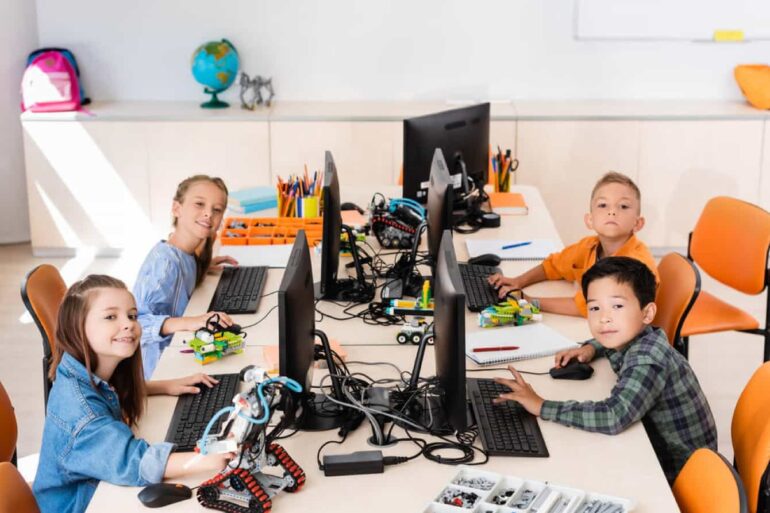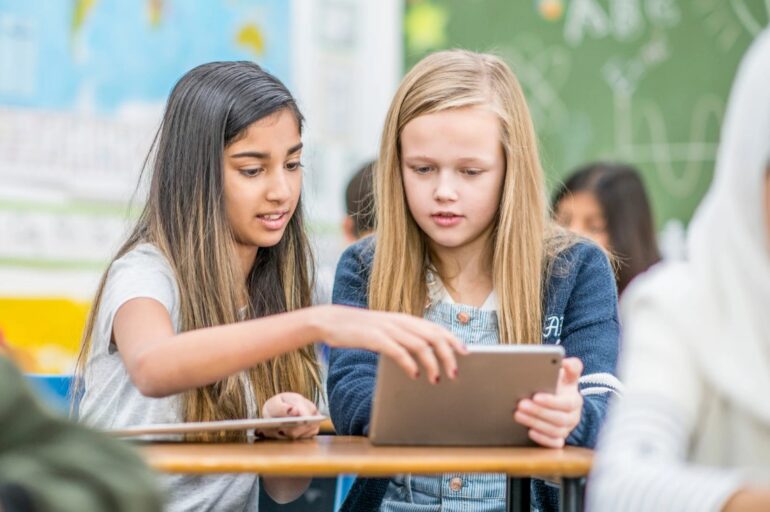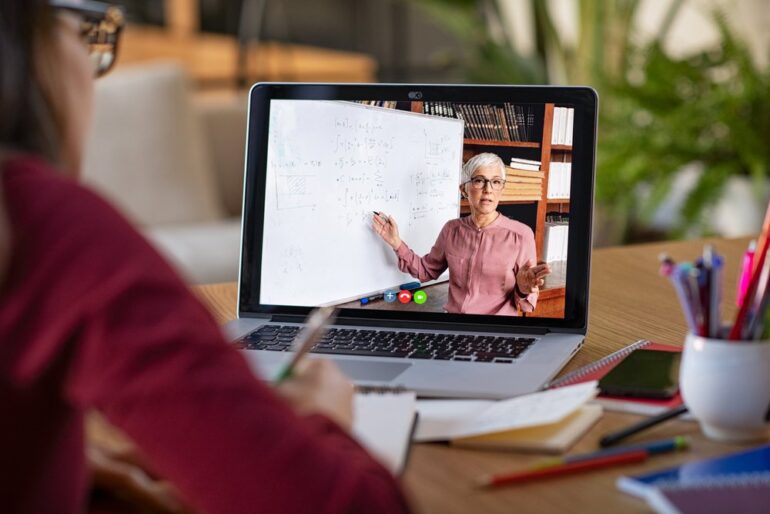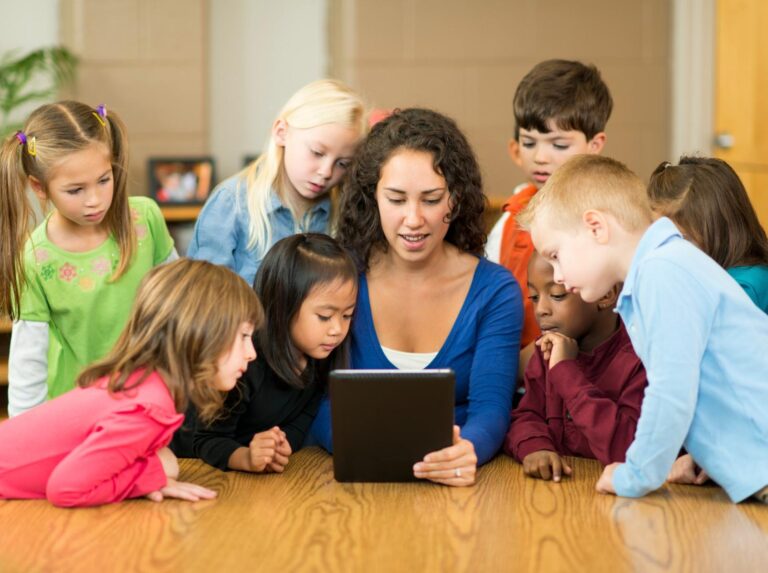Technology can be a powerful tool when used for educational purposes. Millions of students all over the world relied on it throughout the global health crisis as various tech tools enabled them to continue their education from the comforts of home. Moreover, new tech developments gave way to alternative learning platforms that helped people learn new skills.
Nowadays, even young children are encouraged to use technology in the classroom since it enhances cognitive development, creativity, and innovation. However, parents and educators should be mindful about the type of tech tools that kids have access to, since not everything that’s out there is beneficial to a child’s learning experience.
Here are some of the best ways to integrate technology in early learning.
Gamify Lessons
Getting kids to sit still and learn using traditional teaching methods can be a challenge sometimes, especially if the lessons include a lot of information on a given topic. This is why using video games can be a smart move since it offers fun and interactive learning.
Some parents and teachers may have some qualms about this since there has been a lot of discourse about the negative effects of gaming. Studies have shown that too much gaming can have an influence on mental health since it causes repetitive stress, dopamine addiction, and a reduction in motivation. There have also been reports that children are more likely to have aggressive thoughts when they play video games. However, the end result often depends on what type of video games are being played, the amount of time spent gaming, and whether kids are guided accordingly while they’re playing.
When used as a teaching tool, games can be beneficial for young learners as they can help make complicated concepts easier to understand. Gamification also allows children to learn at their own pace, and this helps them become more confident in their abilities.
More importantly, games encourage engagement, result in better memory retention, and they keep students motivated. Try using games like Raz Kids to help children master sight reading and phonics, or let them play collaborative games wherein they can work together to achieve a common goal.

Use Interactive Teaching Tools
Gone are the days of using traditional chalkboards in the classroom as they’ve become a thing of the past. Nowadays, some schools have started using interactive smart boards in place of whiteboards or chalkboards to teach preschoolers.
An interactive smart board allows users to manipulate pictures or words on the screen by touch. Since it’s interactive and runs with internet connectivity, it also allows teachers to show videos and pictures while they’re teaching.
Brands like Samsung, Vibe, and Epson have created digital boards for teaching, and educators must consider a few things before choosing one for their classrooms.
First, the board needs to be the right size, and rather than playing it safe by choosing a small one, it would be better to get a fairly large model to ensure that every child, even those who are seated at the back, can see everything on the screen without difficulty.
Picture quality or resolution should also be considered, and a board that has a 4K Ultra HD display is recommended for clear and crisp images and videos. Having built-in, front-facing speakers is also a plus since that results in better audio quality when watching videos.
Apart from digital boards, another tech tool to consider integrating into an early learning classroom is a smart projector. This device can be connected to a laptop, and any flat surface, such as a wall, becomes interactive. Meanwhile, curious kids will love something like Google Lens since one can use it to take pictures of any object, and Google will provide information about it.

Provide iPads and Tablets
Kids these days, especially those that belong to Generation Alpha, will know how to use a tablet or an iPad even before setting foot in a preschool classroom. A survey shows that 54% of Gen Alpha own tablets, and they use it to watch content on YouTube, Netflix, and Disney+, among others. Although children can use their personal tablets for their entertainment, the ones that they use for school should enable them to learn in different ways.
Consider providing tablets loaded with well-chosen apps to aid learning. Apps like Moose Math can help kids understand basic math concepts, while Zoolingo provides lots of games, puzzles, and activities that children can do during their downtime. There’s also the Noggin app, which has eBooks featuring popular Nick Jr. characters such as Blue from Blue’s Clues and Dora the Explorer. Teachers can also upload digital picture books, or encourage kids to use the tablet to create art.
Assign Projects and Homework through Online Platforms
Some preschoolers may have trouble remembering or writing down instructions to do homework or certain projects. As such, teachers should use course management systems or learning platforms to ensure that learners get specific instructions to help them accomplish their tasks.
For instance, Moodle, which is a free platform for online learning, can be used to add assignments and track a student’s progress on a task. Other platforms that have a similar function include Google Classroom, Blackboard Learn, Brightspace, TalentLMS, and Schoology.

Use Virtual Reality to Appreciate Art and Other Cultures
Virtual reality is often used for gaming purposes, but when used as a teaching tool, it can give children a different perspective about the world, and it can help them appreciate art and other cultures.
A VR-powered tour of an art museum, for instance, allows kids to learn about different art mediums and be familiar with the works of different artists. Some of the most famous museums around the world offer virtual tours.
Check out ones hosted by the Guggenheim in New York, The British Museum in London, the Van Gogh Museum in Amsterdam, the Musee d’Orsay in Paris, or the National Museum of Modern and Contemporary Art in Seoul.
Meanwhile, virtual tours can also be useful to show young learners what other parts of the world look like and how the locals live their lives in these places. Armed with a smart board and Internet connection, you can take students on a 360-degree guided virtual tour of Tokyo, Japan, or visit a flower garden in the Netherlands.
Taking students on virtual tours will allow them to appreciate different cultures and countries, and it may also awaken a desire to travel.
Using technology in the classroom can help children to learn in a fun way. Consider these ideas to integrate technology in early learning, and see how these can enhance a child’s academic performance.
Sandra Chiu works as Director at LadyBug & Friends Daycare and Preschool.

